Porcellio Haasi High Yellow Isopods For Sale
$49.99 – $199.99
WE HAVE PORCELLIO HAASI HIGH YELLOW ISOPODS FOR SALE HERE ARE SOME HIGHLIGHTS:
- Porcellio haasi
- Captive Bred
- Mixed Sizes: Babies To Adults
- Adults Grow To About 1 Inch
- Excellent For Cleaners And Feeders
- Isopods Consume Waste And Decaying Matter To Keep Your Tank Clean
FUN FACTS!
- Fast Reproducing, Soft Bodied Invert
- These Will Reproduce Right Inside Your Set-Up Supplying A Sustainable Cleanup Crew For Your Animals
- Add These To Your Terrarium To Create A “Bio-Active” Set-Up
- Requiring Moderate To Low Humidity With Temperatures Of 70 – 85 Degrees
- Larger Species Of Isopod Great Food Source For Medium Sized Frogs And Lizards
Porcellio Haasi High Yellow Isopods
Porcellio Haasi High Yellow Isopods, often referred to simply as High Yellow Isopods, are a fascinating species within the Porcellio genus. Originating from the diverse environments of Southern Europe, particularly in regions with rich, moist soil, these isopods have become highly sought after in the hobbyist community. Their unique coloration and intriguing behavior make them a standout choice among enthusiasts.
One of the most distinctive features of the Porcellio Haasi High Yellow Isopods is their striking yellow pigmentation, which sets them apart from other isopods. The vibrant yellow hue, often accompanied by subtle patterns, contributes to their popularity. This extraordinary coloration not only makes them visually appealing but also adds a dynamic element to any vivarium or terrarium setup. The isopods’ relatively large size, compared to other species, further enhances their appeal, providing hobbyists with a more interactive and observable experience.
Their popularity among hobbyists can be attributed to several factors. Firstly, their vivid appearance offers an aesthetic boost to various ecological displays. Secondly, they exhibit fascinating behaviors, including social interactions and efficient decomposing activities, which are captivating to observe. These behaviors also serve practical purposes, as High Yellow Isopods play a crucial role in maintaining healthy soil ecosystems by breaking down organic matter.
Understanding the origin, physical characteristics, and reasons behind the popularity of Porcellio Haasi High Yellow Isopods is essential for any hobbyist looking to incorporate them into their collection. This sets the foundation for a deeper exploration into their care and habitat requirements, ensuring that these remarkable creatures thrive in captivity.
Natural Habitat and Environmental Preferences
Porcellio Haasi High Yellow Isopods, a captivating species within the world of isopods, are known for their distinctive yellow coloration. In their natural habitat, these isopods are typically found in regions that provide a combination of specific environmental conditions. Understanding these conditions is crucial for anyone looking to successfully replicate their habitat in captivity.
Native to Mediterranean climates, Porcellio Haasi High Yellow Isopods thrive in environments that offer a moderate temperature range. They are accustomed to temperatures that range between 18°C to 24°C (64°F to 75°F). Maintaining this temperature range in captivity is essential to ensure their well-being and longevity.
Humidity levels play a significant role in the natural habitat of Porcellio Haasi High Yellow Isopods. These isopods prefer environments with relatively high humidity, typically between 60% and 80%. This is due to their need for moisture, which aids in their respiration and overall metabolic processes. Therefore, when housing these isopods, it is important to maintain adequate humidity levels, which can be achieved through regular misting and the use of moisture-retaining substrates.
Substrate preference is another critical factor in replicating the natural habitat of Porcellio Haasi High Yellow Isopods. In the wild, they are often found in areas with leaf litter, decaying wood, and other organic matter. This type of substrate not only provides a source of food but also offers necessary hiding spots and microhabitats. In a captive setting, providing a substrate mix that includes coco fiber, leaf litter, and decayed wood can help mimic their natural environment, promoting their health and natural behavior.
In summary, understanding the natural habitat and environmental preferences of Porcellio Haasi High Yellow Isopods is essential for any enthusiast or hobbyist. By maintaining the appropriate temperature range, humidity levels, and substrate conditions, one can create a thriving environment that closely resembles their natural habitat, ensuring the well-being of these fascinating creatures.
Diet and Nutritional Needs
Porcellio Haasi High Yellow Isopods exhibit specific dietary preferences that ensure their health and vibrant coloration. In the wild, these isopods are primarily detritivores, feeding on decaying organic matter. This includes leaf litter, decomposing wood, and other plant material, which provide essential nutrients for their growth and development.
In a controlled environment, replicating their natural diet is crucial for maintaining healthy Porcellio Haasi High Yellow Isopods. A balanced diet should consist of a variety of decomposing plant material, such as dried leaves, bark, and rotting wood. Including these elements in their habitat not only meets their nutritional needs but also creates a more naturalistic setting.
Supplementing their diet with fresh vegetables can enhance their nutritional intake. Vegetables like zucchini, carrots, and sweet potatoes are excellent choices due to their high moisture content and nutrient levels. Additionally, it is beneficial to provide occasional fruit slices, though these should be offered sparingly to avoid mold growth in their habitat.
One of the critical components of their diet is calcium. Calcium is essential for the development of their exoskeletons. Without adequate calcium, Porcellio Haasi High Yellow Isopods may experience molting issues and weakened exoskeletons. To ensure sufficient calcium intake, place cuttlebone or crushed eggshells in their enclosure. These sources are readily consumed by the isopods and help maintain their structural integrity.
While feeding, it is important to avoid certain food types. Foods high in protein, such as meat or fish, can be harmful and should not be included in their diet. Additionally, avoid foods that can quickly spoil or mold, as these can create an unhealthy environment. Regularly monitoring and removing uneaten food will help maintain a clean and safe habitat for your isopods.
By carefully managing their diet and nutritional needs, enthusiasts can ensure that Porcellio Haasi High Yellow Isopods thrive in captivity, exhibiting their natural behavior and vibrant coloration.
Setting Up an Ideal Enclosure
Creating a suitable habitat for Porcellio Haasi High Yellow Isopods is crucial for their well-being and longevity. To begin, selecting the appropriate size and type of enclosure is essential. A glass or plastic terrarium is recommended, with a minimum size of 10 gallons to provide ample space for movement and exploration. Ensure that the enclosure has a secure lid to prevent escapes and maintain appropriate humidity levels.
The choice of substrate is another vital aspect to consider. A mix of organic soil, leaf litter, and sphagnum moss can replicate the isopods’ natural environment, promoting healthy behaviors. This substrate should be kept slightly moist but not waterlogged, allowing for the creation of moisture gradients within the enclosure. Regular misting with dechlorinated water can help maintain the desired humidity levels.
Decoration within the enclosure not only enhances its aesthetic appeal but also serves functional purposes. Incorporating natural elements such as pieces of bark, cork, and stones can provide essential hiding spots and climbing opportunities for the isopods. These decorations should be arranged to create a variety of microhabitats, enabling the isopods to choose their preferred conditions.
In addition to hiding spots, it is important to establish moisture gradients within the enclosure. This can be achieved by creating areas with varying levels of humidity, allowing the isopods to regulate their moisture intake. Placing a shallow water dish in one corner of the enclosure can also provide a consistent water source. However, it should be shallow enough to prevent drowning.
Overall, the goal is to mimic the natural habitat of Porcellio Haasi High Yellow Isopods as closely as possible. By paying attention to enclosure size, substrate composition, decoration, and moisture management, you can create a thriving environment for these fascinating creatures. Proper setup and maintenance of the enclosure will contribute significantly to the health and longevity of your isopods, ensuring a rewarding experience for both the caretaker and the inhabitants.
Breeding and Reproduction
The breeding process of Porcellio Haasi High Yellow Isopods is both fascinating and intricate. These isopods are known for their vibrant yellow coloring and active behaviors, which become particularly noticeable during their mating rituals. Successful reproduction requires meticulously controlled environmental conditions, including temperature, humidity, and proper habitat setup.
During the breeding season, male Porcellio Haasi High Yellow Isopods become more active and begin to court the females. Mating behaviors include a series of antennal taps and nudges that can last for several hours. Once the female accepts the male, the mating process commences and can last anywhere from a few minutes to an hour. Fertilization is internal, and females often carry multiple fertilized eggs within their brood pouch.
The gestation period for Porcellio Haasi High Yellow Isopods typically lasts between three to four weeks. During this time, the female will require optimal conditions to ensure the proper development of the juveniles. Maintaining a stable temperature around 70-75°F (21-24°C) and humidity levels at approximately 70-80% is crucial. Additionally, providing a well-ventilated habitat with a moist substrate and plenty of hiding spots can help mimic their natural environment, promoting healthy gestation.
Upon emerging from the brood pouch, juvenile isopods are incredibly small and vulnerable. Ensuring their survival necessitates careful attention to their habitat. Juveniles should be kept in a separate, controlled environment with similar conditions to those of the gestating female. Adequate food sources, such as decomposed organic matter and leaf litter, are vital for their sustenance and growth. Regularly monitoring the habitat for mold and other contaminants is also essential to prevent any potential threats to the juveniles.
Encouraging breeding in captivity involves providing a nutrient-rich diet, which can include vegetables, fruits, and specialized isopod food. Regularly cleaning and maintaining the habitat to prevent overcrowding and stress among the isopods is also important. By closely replicating their natural conditions and ensuring a stable, clean environment, you can significantly increase the chances of successful breeding and rearing of Porcellio Haasi High Yellow Isopods.
Common Health Issues and Solutions
Porcellio Haasi High Yellow Isopods are generally resilient creatures, but like all living organisms, they can experience health problems. Understanding these issues and their solutions is crucial for maintaining a healthy isopod colony.
One of the most common health issues in Porcellio Haasi High Yellow Isopods is infections. These can be caused by bacteria, fungi, or parasites. Symptoms of infections include lethargy, discoloration, or unusual spots on their exoskeleton. To prevent infections, maintain a clean habitat by regularly removing waste and uneaten food. If an infection is suspected, isolate the affected isopod and consult a specialist for treatment options.
Nutritional deficiencies are another concern. Isopods require a balanced diet rich in calcium, protein, and various vitamins. A common sign of nutritional deficiency is a soft exoskeleton, which can make them vulnerable to injuries. Providing a varied diet that includes leaf litter, decayed wood, and supplemental calcium sources like cuttlebone can help prevent deficiencies. Regularly observe your isopods’ feeding habits and adjust their diet as necessary.
Environmental stress is also a significant factor affecting the health of Porcellio Haasi High Yellow Isopods. These isopods thrive in environments with high humidity and stable temperatures. Stress from improper humidity levels or temperature fluctuations can lead to dehydration and reduce their overall vitality. To combat this, maintain humidity levels between 70-80% and keep the habitat at a consistent temperature range of 68-77°F (20-25°C). Using a hygrometer and thermometer can help you monitor and adjust these conditions effectively.
Early identification and intervention are key to addressing health issues in Porcellio Haasi High Yellow Isopods. Regularly inspect your isopods and their habitat for any signs of distress or abnormalities. By ensuring a clean environment, providing a balanced diet, and maintaining optimal living conditions, you can significantly reduce the risk of common health problems and promote the well-being of your isopod colony.
Behavioral Insights and Interaction
Understanding the behavioral patterns of Porcellio Haasi High Yellow Isopods is crucial for anyone interested in keeping these fascinating creatures. These isopods display a range of behaviors that reflect their social structure, activity patterns, and interactions with their environment. Observing these behaviors can provide valuable insights and enhance the overall experience of keeping them.
Porcellio Haasi High Yellow Isopods are primarily social creatures. They tend to form loose colonies and exhibit behaviors that suggest a level of social interaction. Within these colonies, there is a noticeable hierarchy, with dominant individuals often seen leading group activities such as foraging. This social structure is essential for their survival in the wild, where cooperation can significantly increase their chances of finding food and avoiding predators.
One of the most compelling aspects of Porcellio Haasi High Yellow Isopods is their activity patterns. These isopods are generally nocturnal, becoming more active during the night when they forage for food and interact with their environment. During the day, they tend to hide under debris or within the substrate to avoid desiccation and predators. This nocturnal activity pattern makes them fascinating subjects for night-time observation.
Interactions with their environment also play a significant role in the behavior of Porcellio Haasi High Yellow Isopods. They are detritivores, meaning they feed on decaying organic matter, which makes them essential for nutrient recycling in their ecosystems. When kept in captivity, providing a rich and varied substrate can encourage natural behaviors such as burrowing and foraging. Additionally, maintaining appropriate humidity levels is critical, as these isopods are highly sensitive to drying out.
To observe and understand the behaviors of Porcellio Haasi High Yellow Isopods effectively, it is vital to create an environment that mimics their natural habitat. This includes providing ample hiding spots, maintaining suitable humidity, and offering a variety of organic matter for them to feed on. Watching these isopods interact with their surroundings can be incredibly rewarding, offering a glimpse into the complex social and ecological roles they play.
Tips for Long-term Care and Maintenance
Ensuring the long-term health and vitality of Porcellio Haasi High Yellow Isopods requires consistent care and maintenance. One of the primary aspects of their care is maintaining a stable and suitable environment. This involves regularly checking the humidity and temperature levels within their habitat. Porcellio Haasi High Yellow Isopods thrive in a habitat with humidity levels between 60-80% and temperatures ranging from 20-25°C (68-77°F). Using a hygrometer and thermometer can help you monitor these conditions accurately.
Regular cleaning routines are essential to prevent the buildup of waste and mold, which can be detrimental to the isopods’ health. It is advisable to spot-clean the enclosure weekly, removing any uneaten food and feces. A more thorough cleaning can be done monthly, where you can replace the substrate partially to maintain cleanliness while still preserving the beneficial microorganisms that contribute to a healthy environment.
Monitoring the health of your Porcellio Haasi High Yellow Isopods is crucial for early detection of potential issues. Healthy isopods are active, have a vibrant yellow coloration, and show no signs of physical damage or lethargy. Regularly observe their behavior and appearance. If you notice any abnormalities, such as discoloration, unusual lethargy, or visible parasites, it is essential to address these issues promptly. Consulting a specialist in invertebrate care or an experienced hobbyist can provide valuable insights into appropriate treatments.
Ensuring a balanced diet is another critical factor in the long-term care of Porcellio Haasi High Yellow Isopods. They are detrivores and primarily feed on decaying plant matter, but providing a varied diet that includes leaf litter, vegetables, and specialized isopod food can enhance their health and coloration. Calcium supplements, such as cuttlebone or eggshells, are also beneficial for their exoskeleton development.
By adhering to these guidelines and maintaining a consistent care routine, hobbyists can ensure that their Porcellio Haasi High Yellow Isopods remain healthy and thrive for many years. The key to success lies in creating a stable environment, regular monitoring, and providing a nutritious diet.
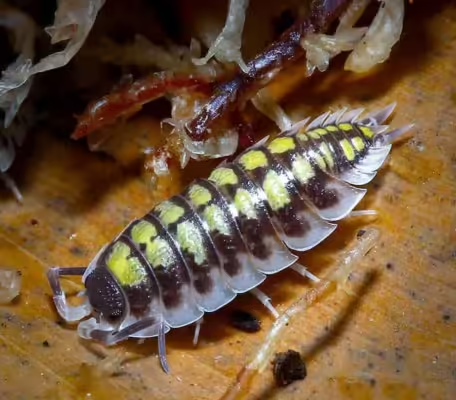
| Option | 10 ct., 25 ct., 50 ct. |
|---|
Be the first to review “Porcellio Haasi High Yellow Isopods For Sale” Cancel reply
Related products
Isopods
Isopods
Isopods
Isopods


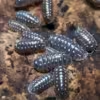

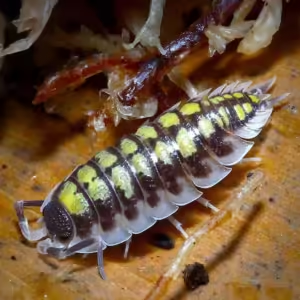
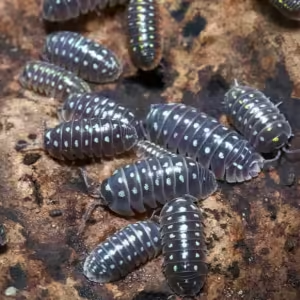
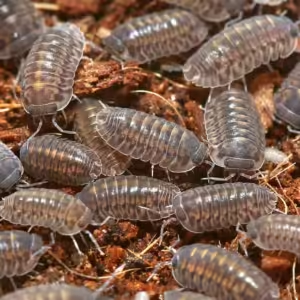




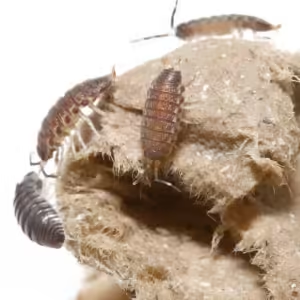

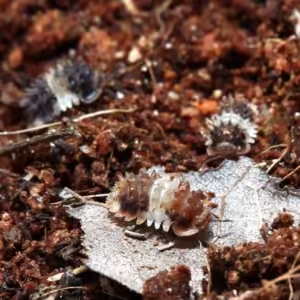
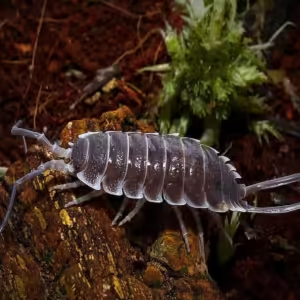

Reviews
There are no reviews yet.